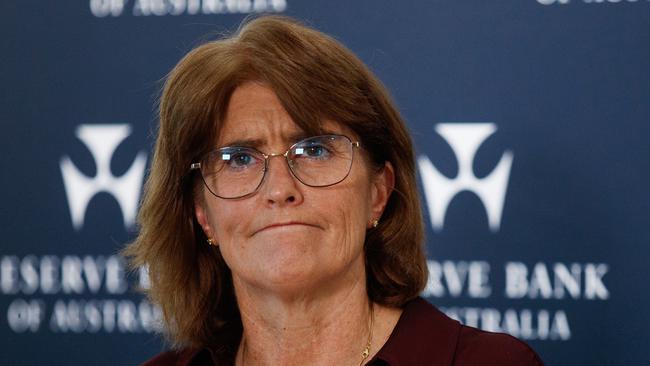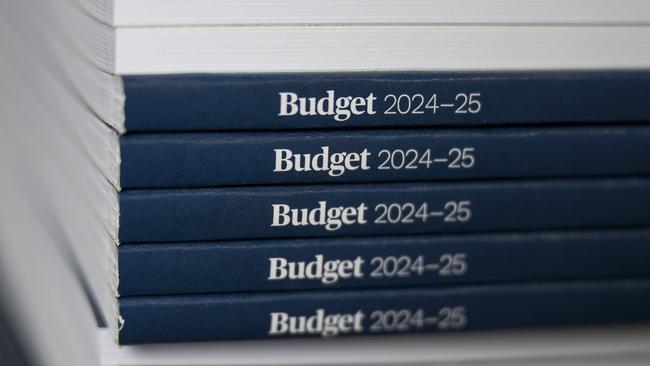Treasurer Jim Chalmers’ big budget bet to get much-anticipated interest rate cut before next federal election
Labor hopes it will be able to spend more on cost of living and deliver significantly lower inflation than the Reserve Bank has forecast to encourage an interest rate cut. Use our interactive tool to find out how the Treasurer aims to do so.

National
Don't miss out on the headlines from National. Followed categories will be added to My News.
Labor is betting it will be able to spend more on cost of living and deliver significantly lower inflation than the Reserve Bank has forecast, fuelling hopes of clinching at least one interest rate cut before a federal election is due.
Treasurer Jim Chalmers has promised his third budget handed down on Tuesday will put “downward pressure” on inflation despite higher government spending, a combination economists have speculated means Australian households are in more “pain” than expected.
Treasury figures released ahead of the federal budget will show inflation is expected to drop to 3.5 per cent this financial year – slightly below the RBA’s forecast of 3.8 per cent – and then continue to decrease to 2.75 per cent in 2024-25.
By comparison the RBA last week forecast inflation would be 3.2 per cent by June 2025, which is significantly above the government’s expectation and still outside the target range of 2 to 3 per cent.

The RBA forecasts had factored in the stage three tax cuts, but could not include any other budget cost of living measures yet to be announced, which is widely expected to include a continuation of energy bill relief for low income Australians.
Independent economist Chris Richardson said much was riding on both “how many more dollars” the government planned to announce and “when” that money was expected to hit the economy.
“I see the best case scenario for inflation and interest rates as one in which the economy is in more pain than the RBA expected, but that pain is offset by more federal and state stimulus than the RBA expected,” he said.
“That would leave Australia’s fight against inflation slow-but-doable.”
Asked what it would take to deliver a rate cut before the next federal election is due by May next year, independent economist Saul Eslake said Labor would have to at least keep inflation to the RBA’s forecast.

“I would want to see inflation coming down in line with the forecast by the RBA, and if the government is forecasting higher than that then they might not get it,” he said.
“If they’re forecasting significantly lower than the RBA and that turns out to be true, then maybe there’s a chance.”
Mr Eslake said he believed there would be just one rate cut either in February or March before it would be time for Australians to go to the polls.
He said if Labor’s cost-of-living measures were “smart” then the government could increase spending without driving up inflation.
“Energy bill relief is an obvious move, as is potentially doing something to boost Commonwealth rent assistance,” he said.
“You impact inflationary pressure by giving money, but on the other hand you’re targeting it to measures that mathematically reduces inflation itself.”

The Treasury figures released by Mr Chalmers on Monday will show Labor is expecting inflation to reach 3.5 per cent this year – which is 25 points lower than its December forecast.
In 2025-26 Labor is expecting inflation to sit at 2.75 per cent, with is 25 points higher than it estimated six months ago.
It is understood this uptick reflects short-term cost of living measures announced on Tuesday that will end by the 2025-26 financial year.
On economic growth, Treasury forecasts are more pessimistic than its own figures six months ago, with the upcoming budget expected to show GDP growing by 2 per cent in 2024-25 compared to a previously expected 2.25 per cent.

Mr Chalmers said Labor’s budget would be “part of the solution” to cost of living issues faced by Australians.
“Inflation is moderating in welcome ways but it’s not mission accomplished because people are still under pressure,” he said.
“Inflation is still the big near-term challenge in our economy which is why the government is doing its bit in the budget.”
Coalition Treasury spokesman Angus Taylor said the “most important” test for the Albanese government’s budget will be if it brings down inflation.
He said Labor must ensure the economy was growing faster than it was spending and “get back to basics” on things like input costs and boosting supply to get housing and manufacturing going.
“(Labor) should make sure that the economy grows faster than spending,” he said.
“And that’s the exact opposite of what we’ve seen in the last two years.”
Read related topics:Federal Budget 2024



